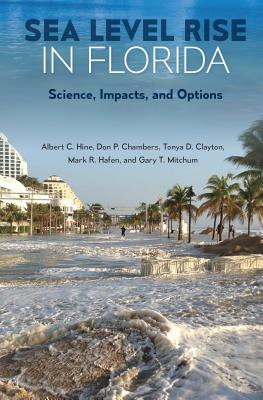

 University Press of Florida
University Press of Florida
Sea Level Rise in Florida: Science, Impacts, and Options


Key Metrics
- Albert C Hine
- University Press of Florida
- Hardcover
- 9780813062891
- 9.2 X 6.1 X 0.8 inches
- 1.45 pounds
- Science > Earth Sciences - Meteorology & Climatology
- English
 Secure Transaction
Secure TransactionBook Description
Every Floridian should read this book. It is the clearest and most readable description of how and why the sea level changes and what the future has in store for us.--Orrin H. Pilkey, coauthor of Global Climate Change: A Primer
Sea levels are rising--globally and in Florida. Climatologists, geologists, oceanographers, and the overwhelming majority of the scientific community expect a continuation of this trend for centuries to come. While Florida's natural history indicates that there is nothing new about the changing elevation of the sea, what is new--and alarming--is the combination of the rising seas and the ever-growing, immobile human infrastructure near the coasts: high-rise condos, suburban developments, tourist meccas, and international metropolises.
The stakes are particularly high in Florida, where much of the landscape is already topographically low and underlain by permeable limestone. Modern-day sea-level rise poses unprecedented challenges for sustainability, urban planning, and political action.
Sea Level Rise in Florida offers an in-depth examination of the rise and fall of sea levels in the past and the science behind the current data, both measured and projected. The authors also discuss ongoing and potential consequences for natural marine and coastal systems and how we can begin to plan strategically for the inevitable changes.
Author Bio
Dr. Hine is fundamentally a broadly-trained geological oceanographer who has addressed sedimentary geology/stratigraphy problems from the estuarine system out to the base of slope—primarily in carbonate or mixed siliciclastic/carbonate environments. He, his associates and graduate students have defined the response of coastal and shelf depositional systems to sea-level fluctuations, climate changes, western boundary currents, antecedent topography, and sediment supply.
Specifically this includes geologic origin and evolution of submerged paleo-shorelines, reefs (relict and active), shelf sand bodies, open marine marsh systems, barrier islands, and back-barrier environments. Hine’s primary research tools are high-resolution seismic reflection profilers, side-scan sonars, swath bathymetric systems, geoacoustic seafloor-classification systems, and ROV’s. Additionally, they have used a variety of submersibles including the DSRV Alvin and Clelia.
Dr. Hine has participated in >75 research cruises including the JOIDES Resolution (Co-chief scientist—Leg 182, and sedimentologist—Leg 194). Dr. Hine won the Francis P. Shepard Medal for excellence in marine geology in 2009.
Source: University of South Florida
Videos
No Videos
Community reviews
Write a ReviewNo Community reviews